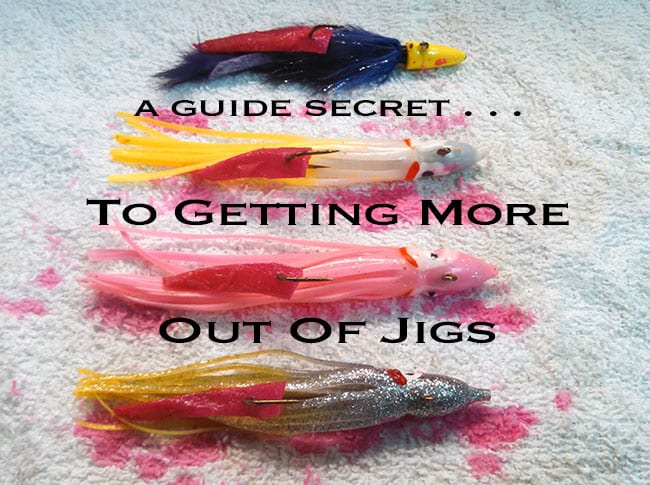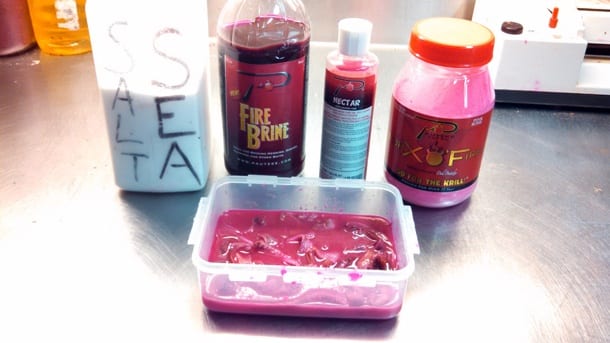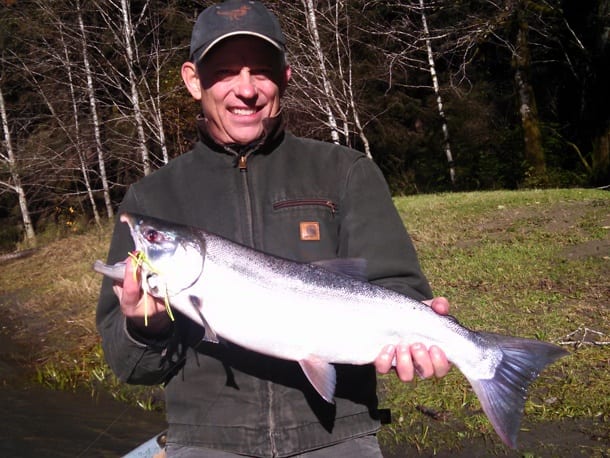Spawn
A Guide Secret To Getting More Out of Jigs
By Bob Kratzer | 11/19/2014
More than 27 years ago while twitching small marabou jigs for trophy rainbows in a small stream in Alaska I ran into a problem. The silver salmon that were also in the stream liked the jigs better than the rainbows. This technique yielded an epic silver bite, one that improved even more once I started tying jigs with colors more conducive to salmon fishing. It was apparent I’d come up with something that would revolutionize my salmon fishing.
That fall I brought this new technique down to the Washington Coast. For the next 20 years I had something special that allowed me to consistently catch fall salmon at a rate that surpassed any method I’d tried before. However like all good things, they change with time. The Northwest fishing community now twitching jigs often. It’s no longer a guide’s secret and hasn’t been for as long as I can remember.
On the other hand, in my quest to always be on the forefront of fishing techniques and working with a tremendous company like Pautzke I was able to come up with a way to enhance my jigs, just enough to make them different than the majority. Doing so has me back on the cutting edge and its shown in our catch rates this fall.
For those who don’t practice this technique, twitching jigs resembles either squid or shrimp moving through the water. With our ability to make and tie jigs in all sorts of colors and styles we are now able to use this technique to catch salmon in all water flows and clarity. Meanwhile, the one thing we’ve still been missing is making our jigs smell like the squid or shrimp that we are trying to imitate.
Fortunately, recent experimentation has enabled me to surpass this hurdle. Using fresh squid I now have a jig that looks, swims and finally smells like a squid, and we all know how well salmon smell. With a little sea salt, Pautzke Fire Brine, BorX O Fire and Nectar, I can make a squid tough, last longer and smell irrestible to salmon. It’s given me a new edge on the water. The cured/brine squid is producing catch rates like I saw a few decades ago.
The Recipe
Take a fresh squid and cut the hood open lengthwise. Clean out the hood and put the tentacles in a bag to use later for steelhead (we’ll cover this in my next blog). After cleaning the hood, use scissors and cut the hood into long, thin strips roughly a quarter-inch thick. The squid are ready to cure.
Add the following to a small container:
1/8 cup Sea Salt
1/8 cup Pink Fire Brine (or your color choice)
1/8 cup Pink BorX O Fire (or your color choice)
Red Pautzke Nectar (enough to cover squid making your cure into a thin paste)
After mixing the above contents, add your squid into the cure and allow to sit overnight. They’ll be ready to fish in the morning. Keep in mind; you can match colors of Fire Brine and BorX O Fire to create different colors of squid for your jigs. The color you choose is personal preference.
Using Squid To Twitching For Salmon
Squid is already pretty tough, but curing them makes them tougher while also enhancing the smell. Adding the krill and egg smell (which is present in the BorX O Fire and Nectar) overwhelms the salmon making your jig irresistible.
With your squid cut into skinny lengths you can now add them to your jig. I like to cut my squid strips down to about two-inches. Then, I take the squid and simply push the tip of it onto my hook, roughly a quarter-inch from the end of the strip. This will allow the squid strip to lie along the tail and move with the tail, while not impeding the hook from sticking the salmon, but all along adding the smell that salmon crave.
As more anglers find out about twitching for salmon, it’s these little additions that help catch more salmon this fall. Now go get yourself some fresh squid, grab some Nectar, FireBrine and BorX O Fire, which if you live in the Northwest you probably already have, and get out there and catch more salmon, like I’ve been doing.
Editor’s Note: Veteran guide Bob Kratzer owns Anglers Guide Service. For more info on his Pacific Northwest guided salmon trips please visit www.anglersguideservice.com.














